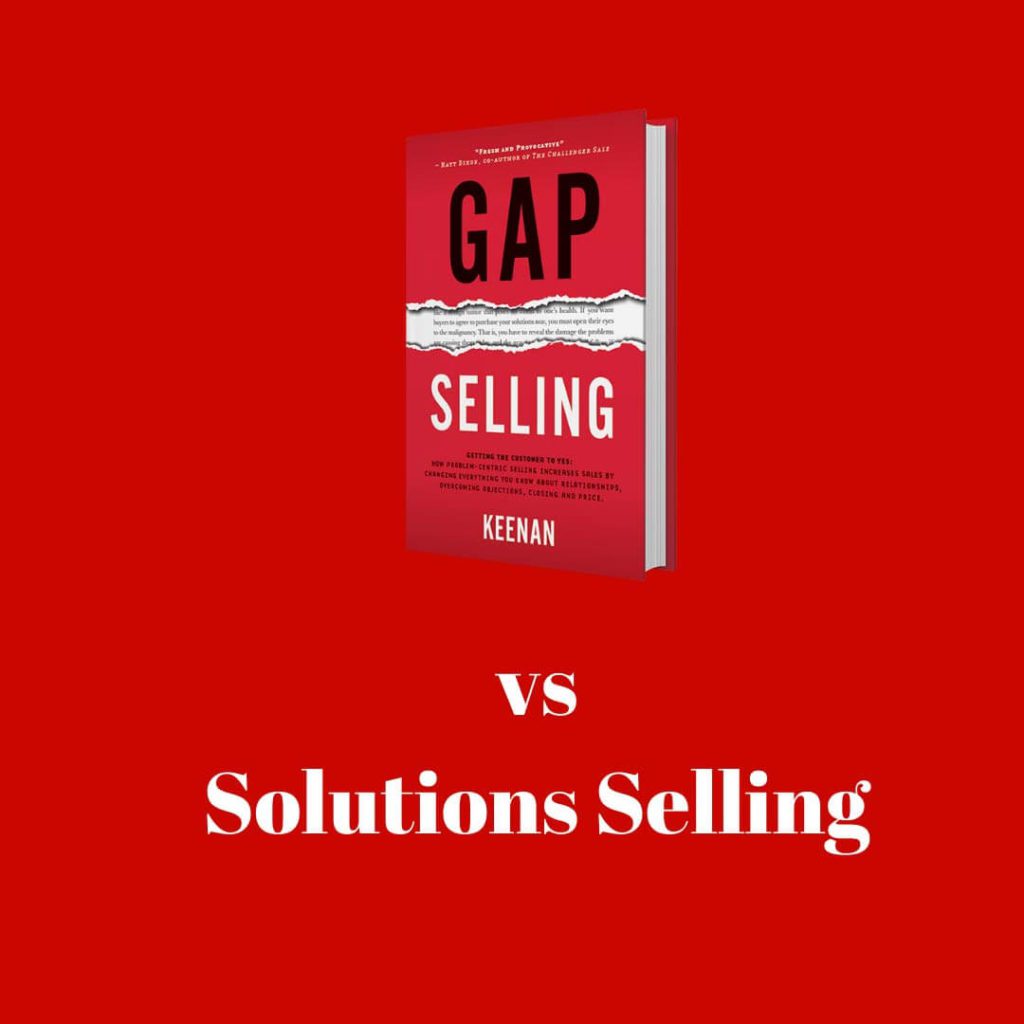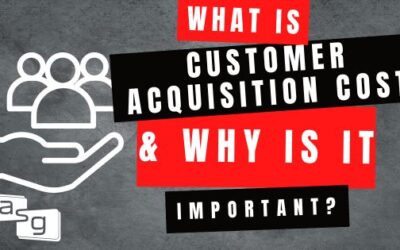How is Gap Selling different than Solution Selling?
It’s hard to believe that Gap Selling has already been out for a couple of years now. Since it’s release, I’ve had countless conversations about the book and the methodology and this questions seems to come up again and again. 
Understanding how often I get this request, I thought I’d share my thoughts here and help folks understand how they differ.
To illustrate, I feel it best to point to an article in the Harvard Biz Review, written by the authors of the Challenger Sale. Here’s the money quote from the article as it relates to Solution Selling:
Under the conventional solution selling method that has prevailed since the 1980s, salespeople are trained to align a solution with an acknowledged customer need and demonstrate why it is better than the competition’s. This translates into a very practical approach: A rep begins by identifying customers who recognize a problem that the supplier can solve, and gives priority to those who are ready to act.
There is no better sentence that helps define the difference between Gap Selling and Solution Selling than the first one above. Notice the emphasis on customer need in the above sentence.
The Solution Selling Methodology
In the conventional solution selling methodology, sellers look to find a need. The idea is that the customer has a need that’s causing pain, and if the seller can find it, they have the ability to make a sale. Here’s the problem with that: even in today’s world, buyers don’t always understand the problem very well and even when they do, they’ve rarely evaluated it, measured it and quantified it in relation to what “could be” or in terms of a future outcome (ie the gap).
This lack of understanding drives the perception of needs that are not accurate or don’t align with the optimal outcome for the buyer. In other words, buyers often buy stuff that doesn’t meet their expectations or deliver the expected value because they didn’t properly asses the problem. This lack of assessment by companies gives salespeople a tremendous opportunity to gain credibility and wield massive influence in the sale if they choose to capitalize on it by NOT being product-centric.
Don’t Sell to Need
In Gap Selling, we explicitly say, “don’t sell to need!” Selling to need stunts the sale and puts the salesperson in the cheap seats. Without an understanding of why the buyer needs what they say they need and what the root causes are that are creating that need, there is no real assurance that what you’re selling can deliver. Selling to need is simply another fancy way of product selling or being product-centric.
In addition to selling to need, the above sentence offers additional differences. Notice where it states, “align a solution . . . and demonstrate why it is better than the competition’s.” Nothing could be more product-centric than competing at the product-level to win a sale.
In Gap Selling, the notion of creating an environment where you’re competing against another product on features and functions is crazy. Product-centric selling weakens a salesperson’s position and puts the product at the center of the sale, not the problem and the desired outcome. When salespeople create environments where the buyer is comparing features and functions based on need rather than delivery of the desired outcome, nobody wins and salespeople lose leverage and dollars.
Gap Selling coined the term problem-centric selling and doesn’t advocate selling to need, or competing at the product level. Gap Selling moves conversations to problem discussions, BEFORE any agreement on need is reached. There is little to no discussion on the product or its features until the current environmental problems have been identified, quantified and the impact to the organization, department or functional group has been measured.
Gap Selling focuses the entire sales process around current state problems and their magnitude. Then moves the focus to a desired future state, based on desired business outcomes. Once these two elements have been identified, and only then, does the discussion move to need and potential solutions.
The value in Gap Selling vs Solution Selling and other selling methods is in its problem-centric approach. Rather than looking at the sale as the opportunity to sell a product or solution, Gap Selling looks at it from the problem-solving perspective agnostic of the specific solution.
Why Do People Buy?
People buy to solve a problem. That’s how it works. No problem, no need to change. No need to change, no need to buy anything. When salespeople sell a product or solution based on need, they are selling in the dark. They don’t understand the motives or the current environment behind the need.
Selling to need is starting the sales process half-way through the sale. When salespeople focus on solving a problem and look to diagnose the problem before treating the problem they build the foundation required to properly support the buyer through the entire sales process. They are starting from the beginning, not the middle.
Problem-centric selling positions the salesperson as a credible expert motivated by the desire to effectively solve a legitimate business problem for the buyer.
Product-centric selling and needs-based selling position the salesperson as just that, a salesperson motivated by commission, presidents club and quota.
Gap Selling = Problem-Centric Selling
Solution Selling = Product-Centric Selling
IF YOU OR YOUR SALES TEAM NEED HELP IMPLEMENTING A NEW PROBLEM-CENTRIC SALES STRATEGY REACH OUT TO OUR SALES TEAM.





0 Comments